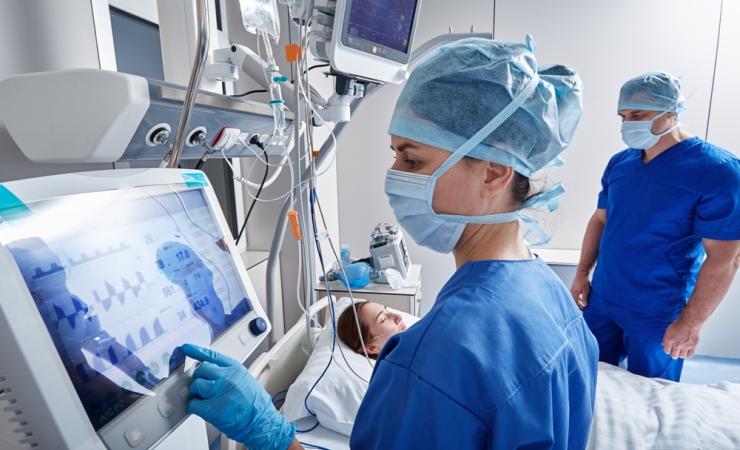Intensive care units (ICUs) are highly technical environments, with myriad machines monitoring patients’ vital signs and keeping them alive by supporting their organs and delivering medicines, fluids and nutrients. These machines are equipped with multiple alarms which sound when they detect an issue. The problem is that alarms sound so frequently that it is increasingly difficult for ICU staff to pick up on which alarms require attention and which can be safely ignored due to the context. Moreover, the sheer number of alarms can induce ‘alarm fatigue’, when staff no longer notice them. On the patient side, the constant beeps and bells often prevent them from getting the rest they need to heal.
Studies have shown that the majority of alarms in ICUs are false or do not require clinical intervention, meaning that there is immense potential to reduce noise levels and make ICUs more peaceful places for staff and patients alike.
Can smart technologies help to reduce noise in the ICU?
The aim of SASICU (which stands for ‘smart and silent ICU’) is to use smart technologies to both reduce the frequency of alarms in the ICU and make it easier for staff to identify patients at risk of deteriorating or developing post-intensive care syndrome (PICS).
The project makes use of the service-oriented device connectivity (SDC) standard (ISO/IEEE 11073 SDC), which facilitates the interoperability of different medical devices and IT systems. SASICU will run four studies at different hospital sites across Europe to explore how system architectures based on SDC standards can help to make ICUs more peaceful and also improve patient care.
One study will explore how alarms can be directed to the appropriate staff member instead of sounding at the patient’s bedside. It will also investigate how silencing bedside alarms contributes to patients’ healing process. Another study will assess how algorithms could identify unnecessary alarms that could be silenced without affecting patient safety.
Using AI to improve patient care
Two further studies focus on how the SDC standards could support artificial intelligence (AI) applications.
Today, there is no way to predict which patients will develop PICS, a combination of physical, psychological and cognitive symptoms that affect some patients after discharge from the ICU. Cases of PICS are on the rise as a consequence of advances in critical care medicine. One study aims to develop algorithms that can analyse ICU patients in real time and detect clues that a patient is at risk of PICS early on, so that their care can be managed appropriately.
“This project is crucial in improving patient outcomes by identifying PICS early and implementing intervention strategies. Additionally, the reliance on interconnected devices and data-driven approaches is indispensable in this context. The integration of innovative technology in ICUs allows for the continuous monitoring and analysis of patient data, enabling healthcare professionals to detect subtle changes that may indicate the onset of PICS,” said Prof. Oliver Kimberger of the Medical University Vienna. “This approach not only enhances the precision and efficiency of PICS management but also aligns with the evolving landscape of healthcare, which increasingly depends on digital solutions. As such, this project is perfectly positioned within the EU framework, which emphasises both the importance of advanced healthcare technologies and the need for improved patient care post-intensive treatment.”
Finally, the fourth study focuses on heart-lung interactions and aims to deliver algorithms capable of detecting certain syndromes and negative developments in patients’ condition. Based on this, a decision support system for clinicians will then be developed and evaluated.
SASICU’s partners include university hospitals as well as medical device and IT companies.
"We are delighted about the IHI's funding and see this as confirmation of the need for data-driven therapy support in acute care,” says Michael Wilkening, Strategy and Business Development for Medical Technology at Dräger. “At the same time, the clinical use cases of the ‘Smart and Silent ICU’ project illustrate how important international standards such as SDC are for the secure exchange and use of data between different medical devices and IT systems. This enables pioneering applications for clinical practice, such as AI-based clinical decision support."
